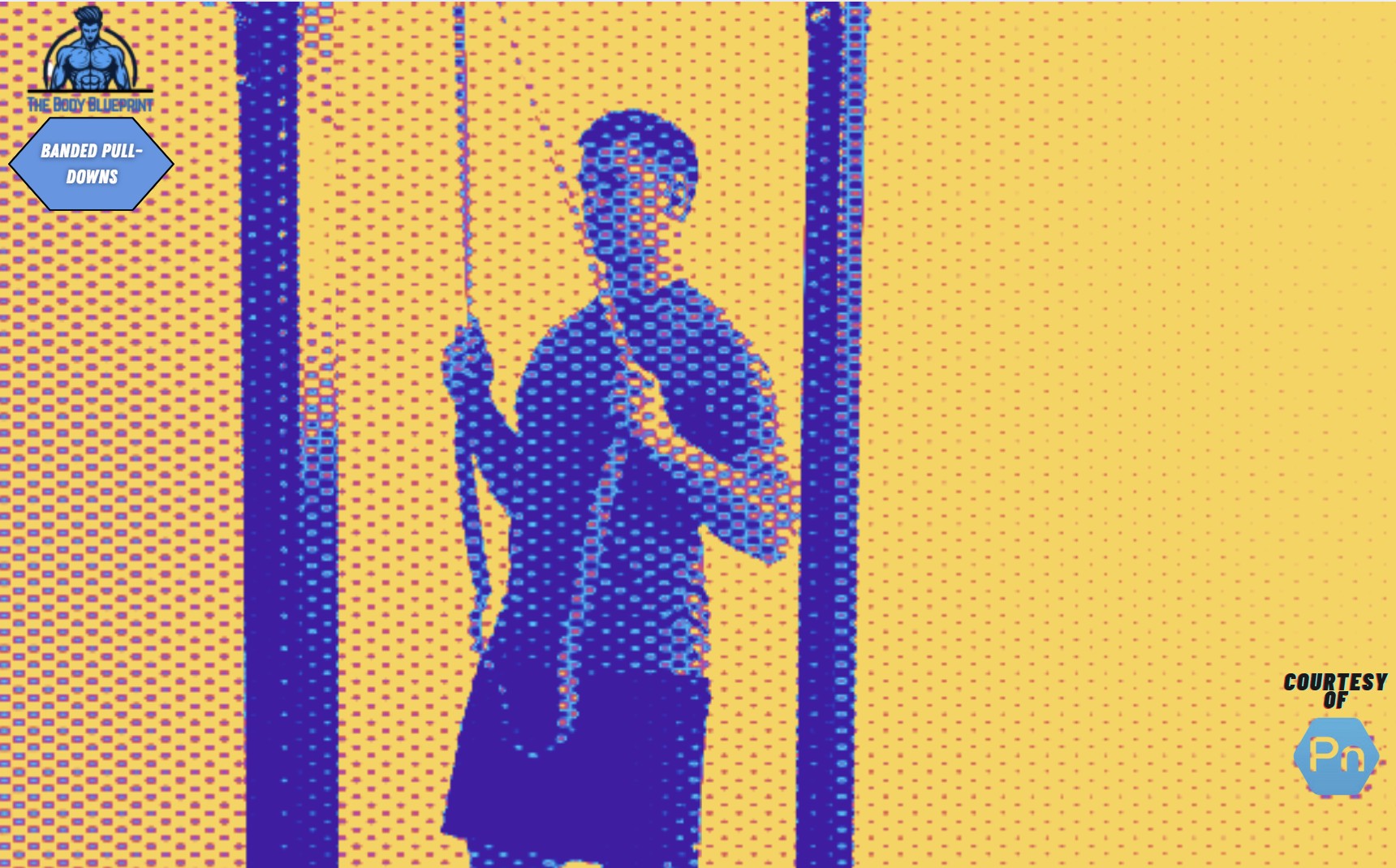If you’ve been chasing that wider back, bulletproof shoulders, or even just trying to tame your inner “lat flare” envy, the banded pull-down might be your new secret weapon. It’s a move that’s as versatile as it is effective, with enough resistance and control to light up your lats and make your upper body feel unstoppable.

What Is a Banded Pull-Down and Why Should You Care?
Picture this: you’re holding a resistance band, anchored above your head, and mimicking the same motion as a cable lat pull-down at the gym—but without needing a clunky machine. The banded pull-down isolates your lats while engaging your core, shoulders, and arms, making it a powerhouse for strength and posture improvement.
Quick Benefits of the Banded Pull-Down:
- Builds upper body strength and muscle definition.
- Improves posture and stabilizes your spine.
- Perfect for home workouts or on-the-go fitness.
- Scalable for all fitness levels.
Muscles Worked: Targeting the Essentials
When you dive into a banded pull-down, you’re not just hitting your lats and calling it a day. Oh no, this exercise is an upper-body symphony.
| Muscle Group | Primary or Secondary? | Role |
|---|---|---|
| Latissimus dorsi (lats) | Primary | Drives the pull-down motion. |
| Rhomboids | Secondary | Helps retract your shoulder blades. |
| Biceps brachii | Secondary | Provides pulling assistance. |
| Core muscles | Stabilizers | Keeps your torso steady and strong. |
The magic here lies in how the band provides tension throughout the entire movement, creating an eccentric (lengthening) and concentric (shortening) workout for those muscles.
Performing Banded Pull-Downs: Step-by-Step
The banded pull-down isn’t rocket science, but nailing your form? That’s the difference between building a stronger back or waking up with regret.
What You’ll Need:
- A resistance band (medium or heavy resistance).
- A sturdy anchor point above head height (like a pull-up bar, door frame, or tree branch).
Step-by-Step Breakdown:
- Set up your band: Loop the resistance band securely around your anchor point.
- Get into position: Kneel on one or both knees about an arm’s length away from the band. Grip it with both hands, palms facing forward or slightly turned in.
- Engage your core: Keep your back straight and avoid overarching your spine.
- Pull down: With control, bring your hands toward your chest, squeezing your shoulder blades together at the bottom of the movement.
- Slowly release: Return to the starting position with a slow, steady motion.
Pro Tips for Better Gains:
- Keep your elbows slightly angled forward to maximize lat engagement.
- Use a tempo of 2 seconds pulling down, 3 seconds releasing.
- If it feels too easy, either double-loop the band or use a thicker one.
Variations of the Banded Pull-Down: Spice It Up
The banded pull-down is like a blank canvas for creativity. Whether you’re a beginner or a seasoned lifter, there’s a variation for you.
| Variation | What It Targets | Best For |
|---|---|---|
| Single-arm pull-down | Isolates each lat | Correcting muscle imbalances. |
| Wide-grip pull-down | Focuses on the outer lats | Creating a wider back. |
| Behind-the-neck pull-down | Strengthens traps and rear delts | Advanced lifters with good mobility. |
| Kneeling banded pull-down | Adds core engagement | Improving posture and stability. |
Common Mistakes and How to Fix Them
Let’s face it—no one wants to waste precious workout time with bad form. Here are the usual suspects when it comes to mistakes and how to avoid them:
1. Pulling With Your Arms, Not Your Back
- The Fix: Focus on squeezing your shoulder blades together as you pull. Imagine trying to crush a walnut between them.
2. Leaning Too Far Back
- The Fix: Keep your torso upright and engage your core. If you’re leaning back, the band might be too tight.
3. Using Momentum
- The Fix: Slow it down. Make every inch of the movement controlled, like you’re moving through honey.
Incorporating Banded Pull-Downs Into Your Routine
The beauty of the banded pull-down is its flexibility. Use it as a warm-up, part of your main workout, or even as a finisher to torch your lats before heading home.
Sample Back Day Routine:
- Pull-ups or chin-ups – 3 sets of 8-10 reps.
- Barbell rows – 3 sets of 10-12 reps.
- Banded pull-downs – 3 sets of 12-15 reps.
- Face pulls – 3 sets of 12-15 reps.
FAQs About Banded Pull-Downs
Are Banded Pull-Downs as Effective as Cable Pull-Downs?
While cable machines offer consistent resistance, banded pull-downs provide variable resistance, which can better mimic natural strength curves and improve control.
Can Beginners Use Banded Pull-Downs?
Absolutely. Just choose a lighter resistance band and focus on form. They’re perfect for building strength and coordination without overwhelming your joints.
Final Reps: Why You Need Banded Pull-Downs in Your Arsenal
Whether you’re building a stronger back, enhancing shoulder stability, or just looking for a functional exercise to improve your posture, the banded pull-down has your back—literally. It’s simple, portable, and effective, making it a no-brainer for your workout toolkit.
Ready to feel that lat burn? Grab a band and make it happen. Your future self (and your wider back) will thank you.
